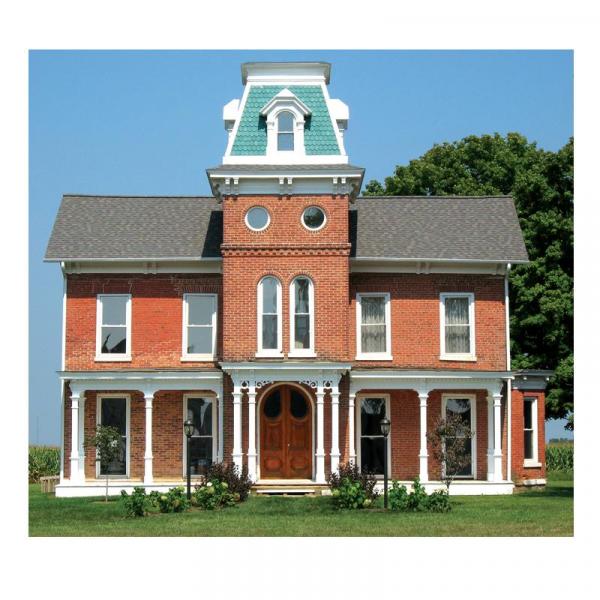
James E. Bonine House
The James E. Bonine House (Penn Rd. and M60) has been a landmark in Cass County since the earliest years of settlement in this area. Along with the original Carriage House across the street, it is one of the best examples of Victorian architecture in Southwestern Michigan and Northern Indiana, as well as having intimate connections to UGRR activity in this area. URSCC purchased these properties in December of 2010 and is in the process of restoring the Bonine House, and then the Carriage House to the beacons of freedom they once represented. Your donations are needed and appreciated. Please click on the Join/Donate page to become part of the legacy. Thank you.
The Bonine House and the Underground Railroad
Quaker James E. Bonine arrived in Cass County in 1843 from Wayne County, IN following his father Isaac, who arrived a year earlier. James E. purchased 80 acres on arrival. He married Sarah Ann Bogue, daughter of UGRR stationmaster and neighbor Stephen Bogue, in 1844. They were members of Young's Prairie Anti-Slavery Friends and staunch abolitionists.
Construction on the Greek Revival farmhouse began shortly thereafter, becoming the home of the Bonine family for over a century. By 1853 James E. owned 1600 acres, making him one of the largest landowners in Cass County.
James E. was one of the Quaker farmers who set aside land to be cleared and farmed by freedom seekers and Freedmen, many of whom went on to settle permanently in the area. Several eyewitnesses have identified the location of a settlement of cabins and a school that became known by generations in Cass County as "Ramptown" on his land west of Calvin Center Road at Bonine Street.
There are many anecdotal stories of freedom seekers being sheltered in the Bonine House and Carriage House; as well as stories of tunnels from the house to the carriage house. To date there is little evidence of the house itself being a UGRR station; however, there is evidence that freedom seekers were sheltered in the Carriage House. The existence of tunnels has yet to be verified.
Bonine House History
Soon after the Civil War, the farmhouse was stripped of its original decoration, enlarged, and enclosed in one of the most flamboyant American-Victorian styles, the Second Empire. The Bonine House then had elaborate double doors, tall arched windows, decorative brackets, and a central mansard tower surmounted with an elegant high-pitched roof. A porch wrapped around the front and overlooked showplace gardens. A beautiful grove adjacent to the house was home to Bonine Elk Park, stocked with elk and buffalo. It became a favorite sight and picnic spot for residents and visitors for decades, and the first MDOT park in Michigan.
A rare example of a Gothic Revival carriage house, built in the early 1850 stands across M-60. It is thought to have been adapted from The Architecture of Country Houses by A.J. Downing, published in 1850. Downing was one of America's most prominent architects.





